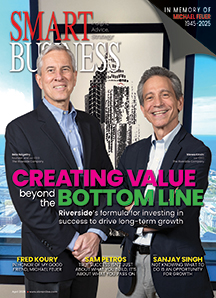As a service company, the health of our business and our ability to grow are directly related to our potential to retain our staff and attract new, great people.
For us, attracting new skilled labor staff has been a Herculean task. There aren’t a lot of skilled laborers entering the job market, and the skilled laborers who exist aren’t as transient as they were five years ago. To paraphrase a friend who manufactures valves, we hoarded inventory in 2020 and 2021 and now, we’re hoarding people. For many of us, it has gotten so hard to hire that the reflexive action is to retain folks we don’t really need, increasing our cost of doing business.
The skilled labor shortage has been an ongoing struggle that pre-dates this hoarding mentality, but the current climate has made it worse. Enticing attractive candidates to leave current employment to try something new is simply not enough incentive for that employee to make that change and absorb the risk.
So, how does a service business develop a growth plan in this environment of rising costs? For my company, it was not only raising prices — a step that was way overdue with the recent inflation and was so universal that every customer understood or even expected it. We also had to revisit our operating expenses and come to a new understanding of not just the cost but why we have the cost, and how it is serving the organization, all while having the challenge of properly compensating our best asset — our employees — both in good wages and in benefit packages.
Just providing benefits isn’t enough; the caliber of benefits and how they are deployed are a necessary investment in growing an organization. Let’s face it, health care could bankrupt people, so providing the best to your employees is an invaluable offering.
Recently, Redmond Waltz Electric was awarded the NorthCoast 99 distinction, a recognition that honors Northeast Ohio workplaces for top talent. I soaked in the opportunity to be with other winners and learn what they provided for their employees to earn this distinction. It was overwhelmingly evident that the top companies in our area are heavily invested in their people. The percentage of NorthCoast 99 companies offering day-one benefits that made their employees’ experience better was so high, it was practically universal. Some additional offerings were remote work, childcare, paid time off, insurance benefits and retirement.
This makes sense to me, especially now. A great wage only gets you so far. After all, how long after getting a raise do you still feel the effects? In my experience, after a few months, most people don’t feel much of a difference. But for benefits people value, it’s a different story.
The cost of health insurance in my organization is one of the highest, if not the highest, single line-item expense. When examining our own operating costs, benefit costs need to be viewed as a primary investment in our No. 1 resource: our people. The top companies have already determined that to be the approach.
To retain and attract talent, it isn’t enough to just pay attention to employees’ experience at work but the quality of their life outside of it. Perhaps if this attitude were adopted more, we’d have more movement in the job market, and all of us would feel less compelled to hoard. ●
Jennifer Ake-Marriott is President & CEO of Redmond Waltz


